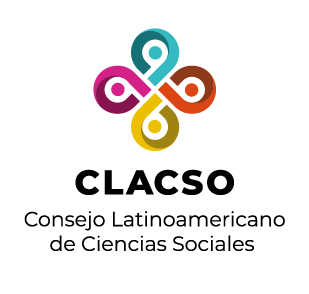Red de Bibliotecas Virtuales de Ciencias Sociales en
América Latina y el Caribe

Por favor, use este identificador para citar o enlazar este ítem:
https://biblioteca-repositorio.clacso.edu.ar/handle/CLACSO/60296| Título : | FROM KESSEL TO BUÑUEL AND OLIVEIRA: WHEN FILM RESPONDS TO LITERATURE DE KESSEL A BUÑUEL E OLIVEIRA: QUANDO O CINEMA RESPONDE À LITERATURA |
| Palabras clave : | Filmic adaptation;Semiotic transcoding;Interarts relationship;Literature and Cinema.;Adaptação fílmica;Transcodificação Semiótica;Relações Interartes;Literatura e Cinema. |
| Editorial : | Laboratório Editorial FCL-UNESP |
| Descripción : | This paper compares and analyzes three different works which interact with each other: the novel Belle de Jour (1928) by Joseph Kessel and two films related to it, Belle de Jour, by Luis Buñuel (1967) and Belle Toujours by Manoel de Oliveira (2006). The aim is to understand the several dimensions implied in the process of semiotic transcodification operated by both filmmakers. A slippage of meaning, along with the formal changes that take place in the transfer of the written work to Buñuel’s film, is intensified in the film by Oliveira, who, although explicitly wishing to establish a dialogue with Buñuel’s film, finally reveals a continuity going back to the literary origin of the whole process. Thus, Oliveira’s final work testifies the intertextuality already present in the preceding film by rendering a more complex dialogue through the response given both to the suggestions embodied in the film and to the hidden meanings it carries. In this way, a new dynamics of exchange is established among the three works which facilitates a permanent re-reading of each work, shedding simultaneously new light on the phenomenon of film adaptation and interarts relationship, namely between literature and film. Análise e comparação de três diferentes obras que dialogam entre si: o romance de Joseph Kessel Belle de Jour (1928) e os dois filmes a ele ligados, Belle de Jour, de Luis Buñuel (1967) e Belle Toujours, de Manoel de Oliveira (2006), com o objetivo de compreender as várias dimensões do processo de transcodificação semiótica operado pelos dois cineastas. Os deslizamentos de sentido, bem como as mudanças formais acontecidas na passagem do livro para a primeira obra fílmica, são acentuados com a realização do filme de Oliveira, o qual, embora desejando explicitamente dialogar com a obra de Buñuel, acaba por manifestar uma continuidade que vai até à origem literária de todo o processo. Desta forma, a obra final testemunha a intertextualidade presente já no filme que a antecede, complexificando esse diálogo através da resposta que fornece tanto às sugestões nesta corporizadas, quanto aos sentidos ocultos nela encontrados. Assim se estabelece uma nova dinâmica de intercâmbio entre as três obras, que favorece uma permanente re-leitura de cada uma delas e lança simultaneamente novos dados sobre o fenómeno da adaptação fílmica e das relações interartes, nomeadamente entre a literatura e o cinema. |
| URI : | http://biblioteca-repositorio.clacso.edu.ar/handle/CLACSO/60296 |
| Otros identificadores : | https://periodicos.fclar.unesp.br/casa/article/view/5573 10.21709/casa.v10i2.5573 |
| Aparece en las colecciones: | Faculdade de Ciências e Letras-Unesp - FCL/CAr - Cosecha |
Ficheros en este ítem:
No hay ficheros asociados a este ítem.
Los ítems de DSpace están protegidos por copyright, con todos los derechos reservados, a menos que se indique lo contrario.